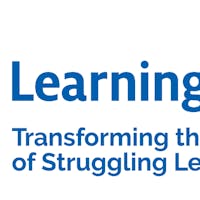“If you are just able to decode the words, but you don’t have the context to understand them, you’re not getting to that effective, efficient, purposeful reading for meaning,” explains Dr. Molly Ness, a reading researcher, author, and vice president of academic content at Learning Ally, a leading nonprofit organization dedicated to closing the reading gap.
Reading proficiency requires the mastery of many complex skills. From phonological awareness and the alphabetic principle to background knowledge and vocabulary, each component is integral to a reader’s ability to comprehend text. Research shows that to become proficient readers, students need early literacy instruction in both word recognition and language comprehension.
Recently, EdSurge spoke with Dr. Ness about the skills needed for reading, the most effective way to teach them and how Learning Ally’s Excite Reading can help.
EdSurge: What does the science of reading show about the skills necessary to become a proficient reader?
Dr. Molly Ness: The science of reading is a long-standing interdisciplinary body of knowledge that shows that to be proficient readers, kids need to be able to lift the words off the page—or decode—and then also need the language skills to understand them. It shows that many interrelated literacy skills intertwine and weave into each other to produce efficient and effective reading.
What’s the difference between word recognition and language comprehension?
Word recognition is the foundational skill for a child to lift the word off the page by applying phonemic awareness. Word recognition includes instant and effortless identification of familiar words, as well as phonics knowledge that connects letter names and sounds. It involves using decoding skills to attack unfamiliar words and knowing the different types of syllables to efficiently break down and decode a multi-syllabic word.
Language comprehension is understanding the meaning behind language, as well as the meanings of words and our language structure. It includes a reader’s understanding of how text works, the use and order of words and sentences and the implied messages behind words.
The two processes of word recognition and language comprehension are not hierarchical; one does not happen after another. We don’t want to give kindergarteners lots of word recognition and overlook language comprehension because these components develop simultaneously. So, while we lay the foundations for word recognition, we must also build students’ vocabularies and background knowledge to foster comprehension.
Why is language comprehension needed to become a proficient reader?
As proficient adult readers, we read to make meaning. We read for enjoyment and information, and we read to be a member of a literate society. All of those tasks lie in the ability to make meaning of what you’re reading. If you can decode the words, but you don’t have the context to understand them, you’re not getting to that effective, efficient, purposeful reading for meaning.
Why does phonics receive more attention than language comprehension?
My hunch is that we focus a lot on decoding because it is a finite skill; once we learn the letters and their sounds, we can check that box. We call these constrained skills because they have a finite ending and clearer progression. Language comprehension is never-ending; we’re always learning more about the world, background knowledge and vocabulary. These unconstrained skills are limitless, and it can be difficult to know where to begin instruction on something so boundless.
What’s the effect of focusing on phonics and ignoring language comprehension?
By just focusing on the lower portion of the Scarborough reading rope, the word recognition, we’re not addressing making meaning. While we may have kids who can decode, if we don’t talk about all of the sub-skills in language comprehension, we’re not really going to make a mark when we are trying to improve reading scores that focus so much on comprehension.
What’s required for effective reading instruction?
Effective reading instruction needs to be explicit in that we’re naming whatever we’re teaching and helping kids understand how it contributes to their reading. With explicit instruction, we eliminate any guesswork or lack of clarity about what has been covered. Effective instruction also transitions in clear scaffolded steps from teacher modeling to independent student practice; this transition occurs through a gradual release of responsibility. It needs to be sequential and build on itself so that there is a progression of skills. Equally important, reading instruction needs to be multi-faceted, focusing on decoding and word recognition while increasing comprehension, vocabulary and oral language.
What is Excite Reading?
Excite Reading is a preK-2 solution that builds language comprehension. It groups texts thematically and provides explicit instruction in vocabulary from those texts. The use of text sets also builds background knowledge and funds of knowledge, which enhances comprehension. Excite Reading explicitly looks at language comprehension skills in a comprehensive way that calls on rich, diverse and engaging text. We intentionally build content knowledge in different domains of information, such as science, social studies and art. Another key element of Excite Reading is the inclusion of think-alouds, in which a teacher showcases their thinking to model comprehension for students.
How does Excite Reading support teachers in providing effective reading instruction?
Excite Reading is ready to go for teachers. Teachers will open up to lesson plans that can be a safety net. It is a comprehensive set of lesson plans grouped thematically, pulling from rich, diverse texts with lots of background knowledge and giving explicit instruction in comprehension and vocabulary, all through texts that are also connected to students’ social-emotional learning. By providing a menu of instructional choices, Excite Reading also allows teachers the flexibility to meaningfully select particular items based on their knowledge of their students and their needs.
How does Excite Reading help emergent readers?
Excite Reading helps kids early in their reading processes by exposing them to texts they will likely not be able to decode on their own. Through read-alouds and audiobooks, students interact with complex texts beyond their independent reading levels. These complex texts support their comprehension through exposure to sophisticated vocabulary and rich background knowledge.
What impact has Excite Reading had on teachers?
The feedback from teachers has been overwhelmingly positive. They find that kids are thrilled about the texts and are excited to complete a text set. Teachers report that the levels of conversation they’re hearing are way beyond what they hear with different texts. Teachers also report that it has eased their workload while giving significant instructional bang for their buck in terms of what they see with student achievement.



